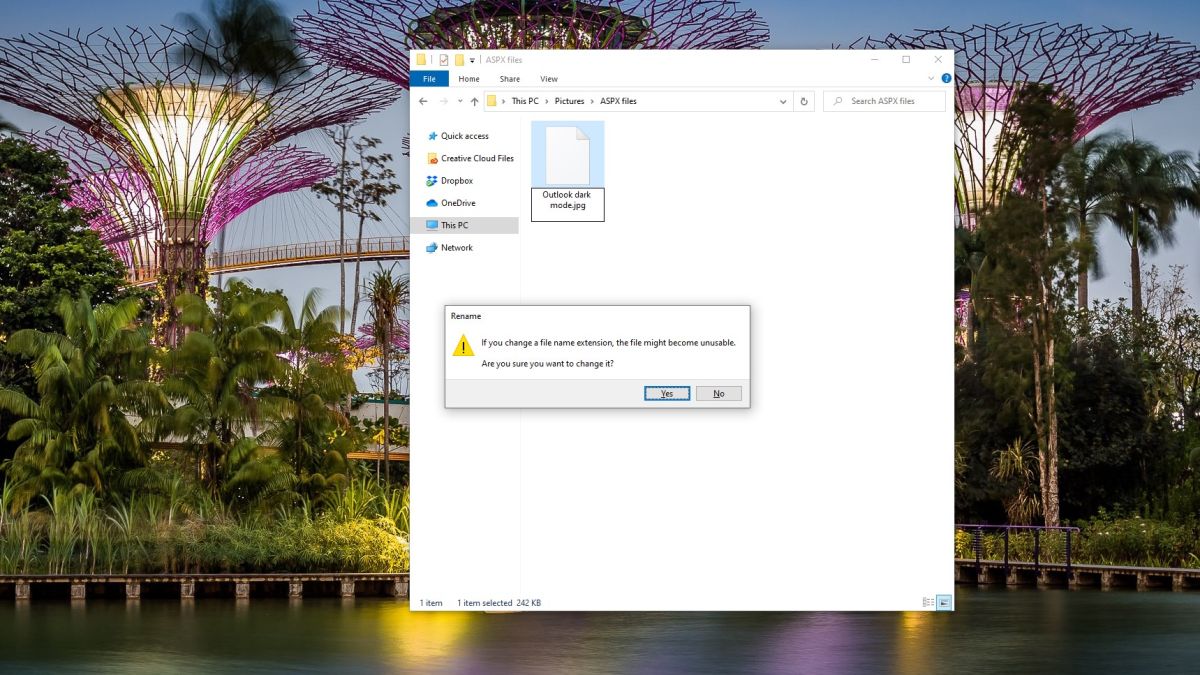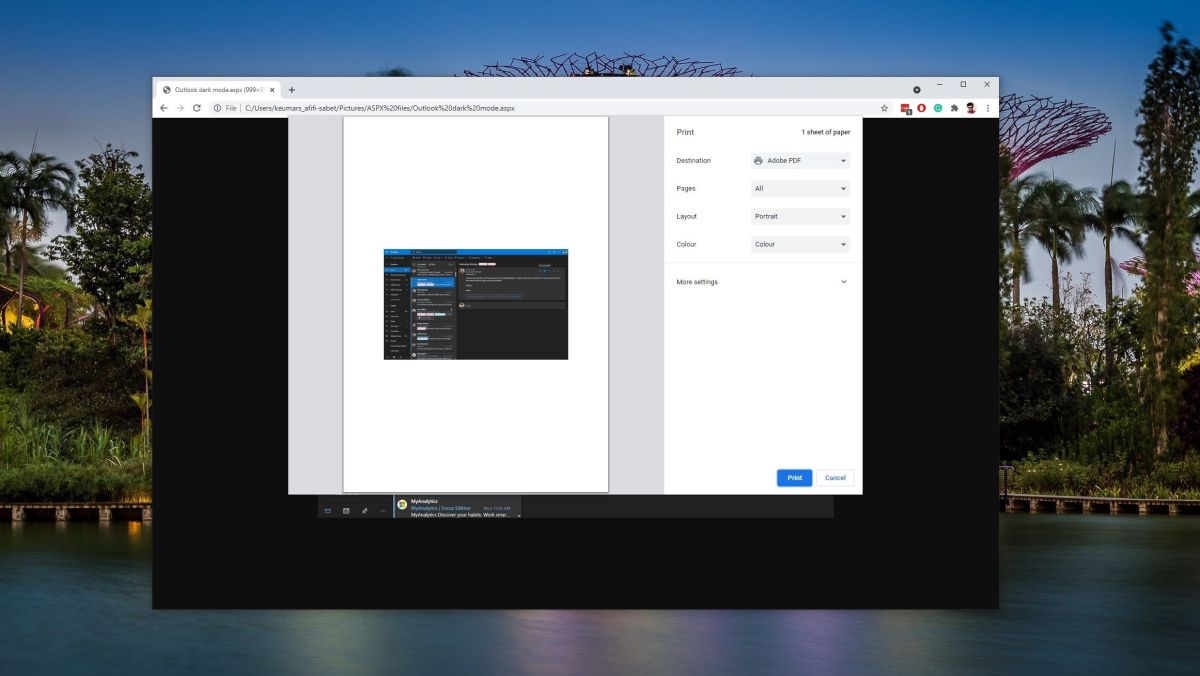What is an ASPX file?
If you’ve ever wondered what an ASPX file is, then you’re not alone - here we look at what this web file does, and how it can be viewed


If you’ve ever wondered what an ASPX file is, then you’re not alone. Many users will have seen a file extension on a document, such as a word file. This typically has a .docx extension, which tells the computer what type of file it is.
This same process applied to ASPX files. Fundamentally, it is a file format that is used by web servers to tell them what to do with a request from the internet.
Active Server Page Extended (ASPX) is an open-source development framework used by web developers to generate dynamic web pages using the .Net and C# programming languages.
ASPX is a development of ASP, the technology that came before ASPX, and is is designed for Microsoft's ASP.NET framework. It is also known as a .NET Web Form.
Essentially, the .aspx suffix on a URL tells us that the web pages are constructed using ASPX.
ASPX files typically contain various scripts or other open-source files that web browsers - the end-user - receive from web servers and these are the components of the web service that deliver dynamic, modern-looking elements on a page.
End users normally shouldn’t see or interact with these file types during their online experience, but if they do it can indicate there is an error with the web service’s configuration.
Sign up today and you will receive a free copy of our Future Focus 2025 report - the leading guidance on AI, cybersecurity and other IT challenges as per 700+ senior executives
How to open an ASPX file

A common occurrence when downloading a file from the web and onto a Windows machine is that it downloads as a .aspx file when you were expecting something else, such as a PDF. In these cases, a quick workaround that often works is to simply rename the file and change the file type to the one you expected, such as .pdf.
But if it’s a true ASPX file you’re looking to open, there are several options out there. Microsoft initially intended for the file to be opened in its open-source integrated developer environment (IDE) Visual Studio Code, arguably the best option for the job. But other programs are out there, both free and paid-for, should you wish to use an alternative.
Using Adobe Dreamweaver to open ASPX files
One of the most popular web development platforms available is Adobe Dreamweaver. This can be used to open the ASPX files. The program can be used to make and publish web pages with HTML, CSS, and Javascript, among others, speedily and from anywhere.
It has a smart, simplified coding engine, with hints and tips to help users get to grips with HTML, CSS and other web standards. However, Adobe is a paid-for service and a subscription to Dreamweaver will set you back £19.97 per month.
Using Notepad++ to open ASPX files
You can use a free source code editor, such as Notepad++, to open ASPX files. This editor is a good replacement for Notepad and also supports several languages, including CGI format. Underpinning this coding app is Scintilla which was developed using C++. It is also a lot quicker in execution and tiny in size too as it uses Win32 API and STL.
Other types of ASPX files (and what you need to do with them)
As hinted at earlier, the .aspx at the end of a URL means that the page has been created using the ASP.NET framework. Users need not open it, the browser will do that automatically. The code within the document will be run by the web server that runs ASP.NET.
Should you desire to open and edit a .aspx file, Microsoft's free Visual Studio can be used to do so. A normal text editor can also open up such files.
How to convert an ASPX file to a PDF

There are many different converters to change ASPX to PDF, but it's often simpler to just use a browser, like Chrome. The ASPX file just needs to be simply dragged and dropped into the browser bar where one would enter a URL. Once the new browser window opens, press CTRL+P to print. Under the destination of said printing window click on 'Change' and save it as a PDF.

Clare is the founder of Blue Cactus Digital, a digital marketing company that helps ethical and sustainability-focused businesses grow their customer base.
Prior to becoming a marketer, Clare was a journalist, working at a range of mobile device-focused outlets including Know Your Mobile before moving into freelance life.
As a freelance writer, she drew on her expertise in mobility to write features and guides for ITPro, as well as regularly writing news stories on a wide range of topics.
-
 Trump's AI executive order could leave US in a 'regulatory vacuum'
Trump's AI executive order could leave US in a 'regulatory vacuum'News Citing a "patchwork of 50 different regulatory regimes" and "ideological bias", President Trump wants rules to be set at a federal level
-
 TPUs: Google's home advantage
TPUs: Google's home advantageITPro Podcast How does TPU v7 stack up against Nvidia's latest chips – and can Google scale AI using only its own supply?
-
 Using an older version of Python? You’re leaving ‘money and performance on the table’ if you don’t upgrade – and missing out on big developer efficiency gains
Using an older version of Python? You’re leaving ‘money and performance on the table’ if you don’t upgrade – and missing out on big developer efficiency gainsNews New research from JetBrains shows a majority of enterprises are using a version of Python that’s a year or more older – and it's having a big impact on efficiency and performance.
-
 ‘It’s far from showing its age’: Java might’ve just turned 30, but it’s still going strong and here to stay
‘It’s far from showing its age’: Java might’ve just turned 30, but it’s still going strong and here to stayNews With Java celebrating its 30th anniversary, we look at the rise of the programming language and what the future holds.
-
 Python’s popularity shows no signs of fading – here’s why software developers love it
Python’s popularity shows no signs of fading – here’s why software developers love itNews Python remains highly popular among developers for a number of key reasons, experts told ITPro.
-
 Oracle Java pricing concerns could spark a developer exodus
Oracle Java pricing concerns could spark a developer exodusNews Oracle Java users have raised concerns over pricing, with many considering switching to open source options.
-
 Python just brushed past JavaScript to become the most popular programming language on GitHub – and a key factor is that AI developers love it
Python just brushed past JavaScript to become the most popular programming language on GitHub – and a key factor is that AI developers love itNews The meteoric rise of Python shows no sign of stopping
-
 JupyterLab review: A powerful tool for documenting your data science journey
JupyterLab review: A powerful tool for documenting your data science journeyReviews Literate programming toolkit takes dynamic code documents to new heights
-
 Microsoft continues its Rust mission with new kernel features
Microsoft continues its Rust mission with new kernel featuresNews The latest critical feature comes as a "small trial" to select Windows Insiders
-
 Report: Regulatory and monetary incentives needed to adopt safer programming languages
Report: Regulatory and monetary incentives needed to adopt safer programming languagesNews Companies have been urged to create plans on how they intend to get rid of memory-unsafe code in their products